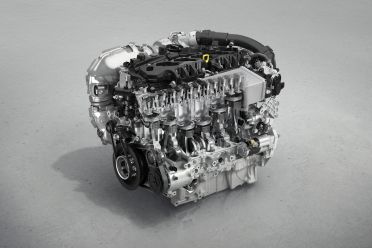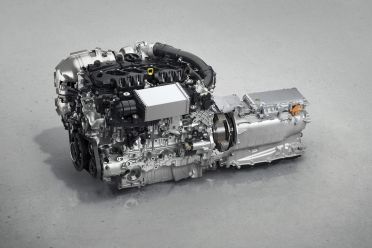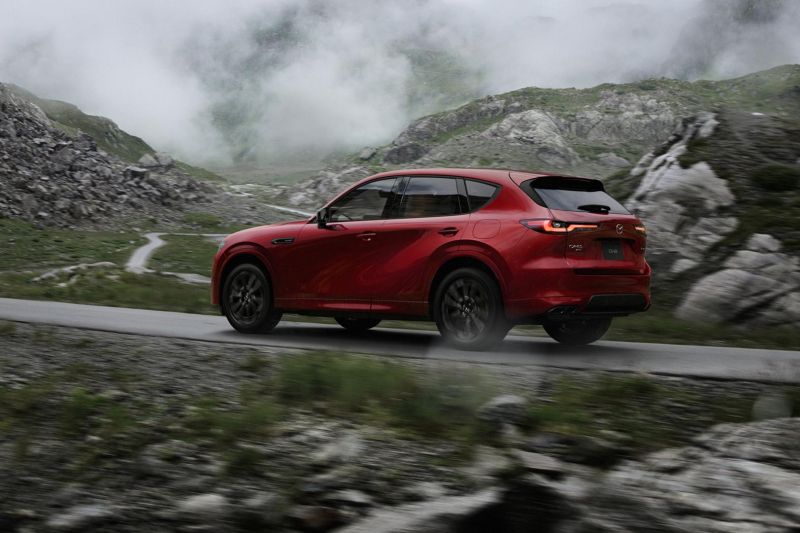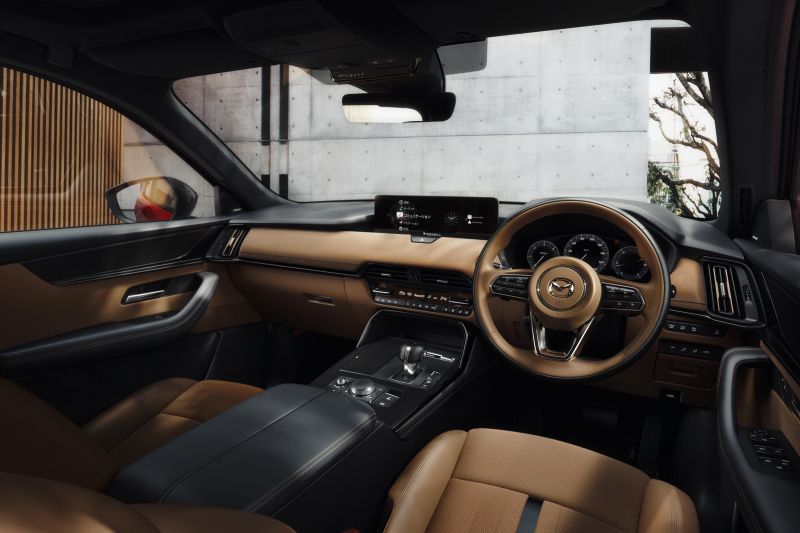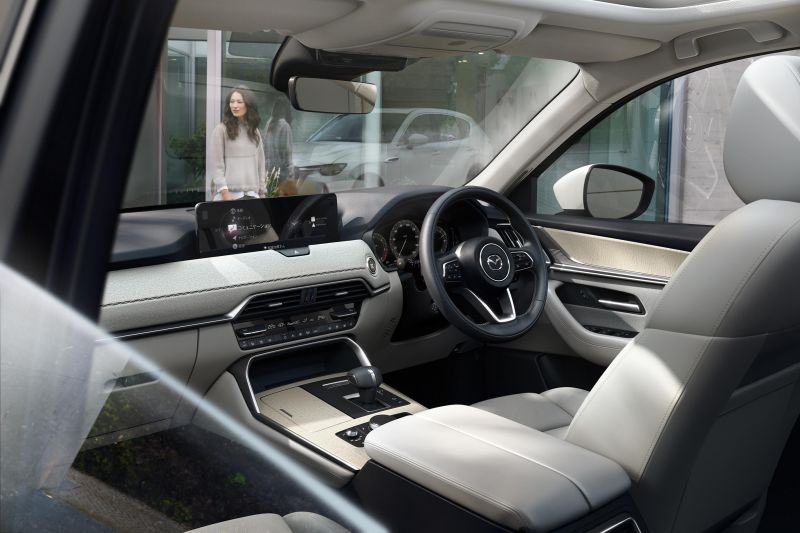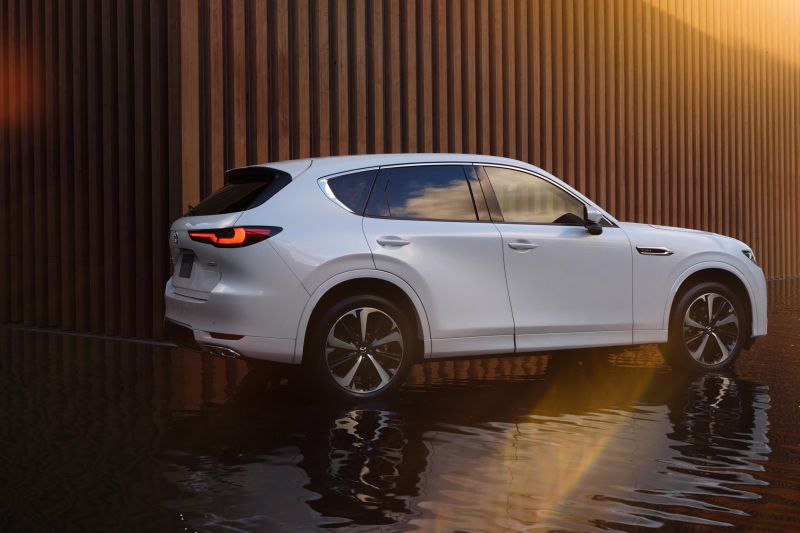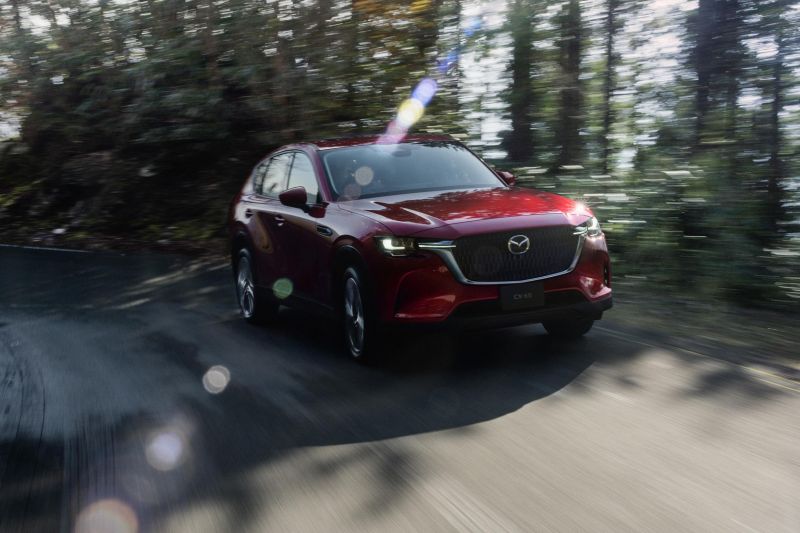Diesel is dead? Try telling Mazda.
The company has confirmed specifications of the e-Skyactiv D and Skyactiv-D 3.3-litre turbo-diesel inline six-cylinder engines that’ll be available in the new CX-60 premium mid-sized SUV.
The Skyactiv-D produces 170kW of power between 4000 and 4200rpm and 500Nm of torque between 1500 and 3000rpm.
The e-Skyactiv D, which includes a 48V mild-hybrid system, pumps out even more power and torque: 187kW at 3750rpm and 550Nm between 1500 and 2400rpm.
Order books have already opened for the CX-60 in Europe ahead of a launch in the northern autumn.
The CX-60 will arrive here in the closing stages of 2022, with pricing and specifications to be announced closer to launch.
Mazda Australia has yet to confirm which powertrains will be offered in the CX-60 here beyond the plug-in hybrid petrol, but has said the entire engine range is on the table.
The CX-60’s 2.5-litre four-cylinder plug-in hybrid e-Skyactiv powertrain produces total system outputs of 241kW of power at 6000rpm and 500Nm of torque at 4000rpm, and uses a 17.8kWh lithium-ion battery.
The plug-in hybrid CX-60 is the most powerful road car the brand has ever produced.
Mazda Japan has also confirmed the CX-60 will be offered with a Skyactiv-G naturally-aspirated 2.5-litre four-cylinder engine with the same bore and stroke as the 2.5-litre PHEV, producing 138kW of power at 6000rpm and 250Nm of torque at 3000rpm.
It’s unclear whether Mazda Australia would choose to bring this less powerful engine here, which would arguably muddy the CX-60’s positioning relative to the similarly-sized but more mainstream CX-5 that’s also available with the 2.5-litre.
Outputs have yet to be confirmed for the new 3.0-litre inline-six cylinder petrol engine.
In Skyactiv-D guise, the CX-60 weighs 1900kg while the PHEV is heavier at 2050kg.
The former has a claimed 0-100km/h time of 7.3 seconds, while the latter has a sprint time of 5.8 seconds.
Selectable drive modes include Normal, Sport, Off-Road and Towing, plus an EV mode in the PHEV.
The CX-60 measures 4740mm long, 1890mm wide and 1685mm tall on a 2870mm wheelbase.
That makes it 190mm longer, 50mm wider and 10mm taller than a CX-5 on a 170mm longer wheelbase.
It’s also 32mm longer, 1mm narrower and 9mm taller than a BMW X3 on a 6mm longer wheelbase.
All CX-60 engine variants will be equipped with an eight-speed automatic transmission, which features a multi-plate clutch and integrated electric motor/generator in place of a hydraulic converter as an input clutch.
Full-time all-wheel drive is provided by a new system which uses an electronically-controlled multi-plate clutch.
Under the skin is a double-wishbone front suspension with control arms top and bottom, as well as a multi-link rear design.
Inside, the CX-60 will offer a 12.3-inch touchscreen infotainment system with wireless Android Auto and Apple CarPlay, as well as 12.3-inch digital instrument cluster and head-up display.
In PHEV guise, it has 477L of cargo capacity behind the second row, measured to the belt line, though adding the underfloor storage compartment brings the figure to 570 litres.
Drop the rear seats, and there’s 1725L of capacity including underfloor storage, measured to the ceiling.
As for safety, Mazda says it’s targeting a five-star Euro NCAP rating. The CX-60 will debut several new safety technologies, some of which are developments of existing systems.
The headline act is See-Through View, which is an extension of the surround-view camera that creates an image of the front and rear corners of the vehicle, allowing the driver to more easily spot objects obscured by the vehicle’s body.
Other new features include hill descent control, a speed limit assist feature for the adaptive cruise control using traffic sign recognition, and safe exit warning that detects approaching road users when opening doors.
Rounding out the safety suite will be technologies like autonomous emergency braking with pedestrian/cyclist detection, lane-keep assist, blind-spot monitoring with rear cross-traffic alert, rear emergency brake assist with pedestrian detection, traffic sign recognition and driver drowsiness detection.
The CX-60 is based on the Skyactiv Multi-Solution Scalable Architecture, which Mazda says will underpin five hybrid models – at least some of which will use Toyota’s hybrid system – plus five PHEVs and three electric vehicles.
This architecture has been developed for both front/all-wheel drive vehicles with transverse-mounted engines, as well as rear/all-wheel drive vehicles – like the CX-60 – with longitudinally-mounted engines.
It’s separate to Mazda’s upcoming Skyactiv Scalable EV Architecture, upon which the first car will debut in 2025.
Mazda is aiming for 25 per cent of its vehicles to be pure electric by 2030, while all vehicles will have “some level” of electrification.
The company has previously confirmed the CX-60 will be joined by a three-row version called the CX-80, designed for markets like Japan and Europe.
Also riding on the new rear/all-wheel drive underpinnings will be the wider, two-row CX-70 and three-row CX-90, designed with the US market in mind.
Given we already receive in Australia two three-row Mazda SUVs – one designed for Japan (CX-8) and one designed for the US (CX-9) – it’s possible we could get multiple models on this architecture. Mazda Australia has already said it’s looking at all four options.
Don’t assume Mazda’s upcoming SUVs will immediately spell the end of existing models like the CX-8 and CX-9, either, according to Mazda Australia marketing director Alastair Doak.
That suggests the new Large Architecture models could be sold alongside existing models, at least for a period of time.





